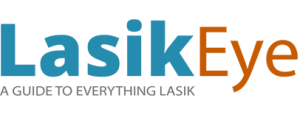Are you tired of the hassle and expense of contact lenses or glasses? You may have considered LASIK eye surgery as a solution to correct your vision permanently. But before taking the plunge, you may wonder if LASIK is really a more cost-effective solution compared to contacts in the long run. Let’s take a closer look at both options and see which one wins the affordability game.
Contact Lenses: The Cost Adds Up Over Time
Contact lenses come in various types, including daily disposables, bi-weeklies, and monthly disposables. The cost of contact lenses varies based on the type, brand, and quantity. According to AllAboutVision, the average annual cost of contact lenses is around $250 to $700. That means that over the course of ten years, the total cost of contacts can range from $2,500 to $7,000. This does not include the cost of solutions and cases, which can add up to an additional $100 to $200 per year.
Keep in mind that the cost of contact lenses can increase over time as your prescription changes, and some types of contacts may require more frequent replacement. Also, many people tend to lose or damage their contacts, which means spending even more money to replace them.
LASIK: A One-Time Investment
LASIK eye surgery is a one-time investment that can provide permanent vision correction. The average cost of LASIK in the US is around $2,000 to $4,000 per eye, which may seem expensive upfront. However, when you consider the long-term savings, LASIK can be a more cost-effective option compared to contact lenses.
For example, let’s assume that you pay $3,000 for LASIK surgery in both eyes. Over the course of ten years, you would not have to pay for any additional vision correction expenses. In contrast, if you wear contact lenses, you could potentially spend over $5,000 or more on contacts, solutions, and cases during the same period.
Additionally, some LASIK clinics offer financing options, which can make the procedure more affordable for patients. LASIK may also qualify for Flexible Spending Accounts (FSAs) or Health Savings Accounts (HSAs), which can provide tax benefits and additional savings.
Conclusion: Is LASIK Really Cheaper Than Contacts?
When it comes to the cost of LASIK vs. contacts, LASIK can be a more cost-effective option in the long run. While the upfront cost of LASIK may seem high, the one-time investment can save you thousands of dollars in contact lenses and related expenses over time. Additionally, LASIK can provide more convenience, better vision quality, and improved quality of life.
However, the decision to get LASIK or stick with contact lenses should not be based on cost alone. It’s important to consult with an experienced eye doctor to determine if LASIK is the right option for your vision needs, health status, and lifestyle.
